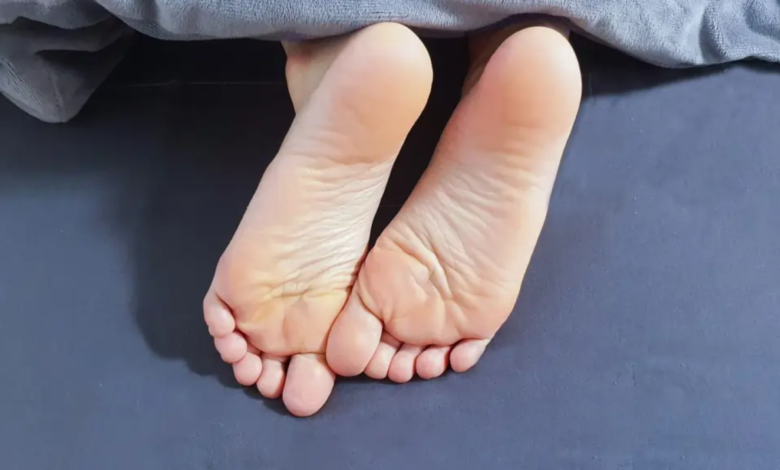Understanding Esfeet for Better Foot Health

Introduction to Esfeet
Esfeet, or simply “feet” in traditional English, are the foundation of the human body’s musculoskeletal system. They consist of a complex network of bones, muscles, tendons, and ligaments that work together to support the body’s weight, absorb shock, and propel us forward during movement.
Understanding the Importance of Esfeet
What is Esfeet?
Esfeet refers to the anatomical structure of the feet, including their shape, arches, and biomechanics. Understanding Esfeet is crucial for maintaining proper foot health and overall well-being.
The Role of Esfeet in Foot Health
The arches of the feet play a crucial role in distributing the body’s weight evenly and absorbing shock during activities such as walking, running, and jumping. Healthy Esfeet contributes to better posture, balance, and mobility.
Common Problems Associated with Esfeet
Esfeet can vary greatly in shape and structure, leading to a range of foot problems, including:
Flat Feet
Flat feet, or pes planus, occur when the arches of the feet collapse, causing the entire sole to come into contact with the ground. This can lead to pain, fatigue, and an increased risk of foot injuries.
High Arches
High arches, or pes cavus, are characterized by an exaggerated arch in the foot. Individuals with high arches may experience instability, pain, and difficulty finding properly fitting footwear.
Overpronation and Supination
Overpronation and supination refer to excessive inward or outward rolling of the foot during walking or running, respectively. These biomechanical issues can lead to strain on the feet, ankles, knees, and hips, increasing the risk of injuries.
How to Identify Your Esfeet Type
Determining your Esfeet type is essential for choosing the right footwear and orthotic solutions. While professional assessment by a podiatrist is ideal, there are DIY methods you can use to identify your foot type at home.
Choosing the Right Footwear for Your Esfeet
Selecting the appropriate footwear is crucial for maintaining foot health and preventing discomfort and injuries. Consider the following factors when choosing shoes for your Esfeet:
- Shoe Features to Look for Based on Your Foot Type
- Arch support
- Cushioning
- Stability features
- Proper sizing and fit
Orthotic Solutions for Esfeet Problems
For individuals with Esfeet issues such as flat feet or high arches, orthotic inserts can provide support and alleviate discomfort. There are two main types of orthotics:
- Custom Orthotics vs. Over-the-Counter Inserts
- Custom orthotics are specially designed to address individual foot issues and biomechanical abnormalities.
- Over-the-counter inserts are more affordable and readily available but may not offer the same level of support and customization.
Exercises and Stretches for Esfeet
In addition to supportive footwear and orthotic solutions, exercises and stretches can help strengthen the muscles of the feet and improve flexibility. Incorporate the following into your routine:
- Strengthening Exercises
- Toe curls
- Arch lifts
- Ankle circles
- Stretching Routines
- Calf stretches
- Plantar fascia stretches
- Achilles tendon stretches
Proper Foot Care for Esfeet
Caring for your Esfeet goes beyond wearing the right shoes and orthotics. Practice good foot hygiene and follow these tips for optimal foot health:
- Importance of Hygiene and Maintenance
- Wash and dry your feet daily
- Keep toenails trimmed
- Moisturize dry skin
- Tips for Preventing Foot Problems
- Avoid walking barefoot on hard surfaces
- Gradually increase activity levels to prevent overuse injuries
- Listen to your body and seek medical attention for persistent foot pain or discomfort
Conclusion
Understanding your Esfeet is essential for maintaining proper foot health and overall well-being. By identifying your foot type, choosing appropriate footwear, and practicing good foot care habits, you can prevent discomfort, injuries, and long-term complications.
FAQs about Esfeet
- What causes flat feet?
- Flat feet can be caused by genetics, injury, or conditions such as arthritis or obesity.
- Are high arches a common foot type?
- High arches are less common than flat feet but can still cause issues with stability and comfort.
- Can orthotics help with foot pain?
- Yes, orthotics can provide support and alleviate pain for individuals with various foot conditions.
- Is it necessary to see a podiatrist for foot problems?
- While DIY methods can help identify foot issues, consulting a podiatrist is recommended for accurate diagnosis and treatment.
- Are there specific exercises for improving foot strength?
- Yes, exercises such as toe curls and arch lifts can help strengthen the muscles of the feet and improve stability.


